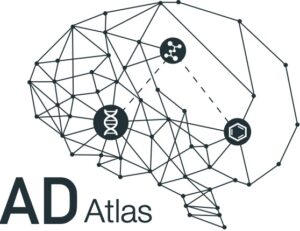Providing Multi-omics Context for Alzheimer’s Disease Researchers: The AD Atlas Study
By Zoë Leanza
 A new open access online tool for data visualization enables large-scale analysis of complex Alzheimer’s disease (AD) data from more than 25 AD-specific and population-based studies. Known as the AD Atlas, the resource empowers scientists to examine vast amounts of complex data across multiple biological domains.
A new open access online tool for data visualization enables large-scale analysis of complex Alzheimer’s disease (AD) data from more than 25 AD-specific and population-based studies. Known as the AD Atlas, the resource empowers scientists to examine vast amounts of complex data across multiple biological domains.
Leading the effort is Helmholtz Munich Ph.D. student Maria Anna Wörheide, who contributed snapshots from the resource to the AD Knowledge Portal through the Community Data Contribution Program.

Maria Anna Wörheide
“We used AMP-AD data to profile all these different biological domains and infer links between genes and across data modalities,” said Wörheide, “using networks like protein-protein co-abundance networks and gene co-expression networks, we capture very complex information from different studies.”
Wörheide likens the networks in the AD Atlas to social networking sites, except each node represents a different data modality (genes, metabolites and AD-related phenotypes) and evidence level, instead of your friends’ friends. Social networks make it easy to visualize connections and identify clusters of influence; similarly, the AD Atlas provides biological context for genes of interest, crucial information for researchers studying a disease as heterogeneous as Alzheimer’s.
The AD Atlas makes complex data more accessible to researchers – regardless of computational experience – by providing both an interactive user interface and the underlying data model. By bringing together heterogenous data in a single comprehensive catalog, the research community can explore unique hypotheses, or deploy independent algorithms on the underlying multi-omics network.
The network-based multi-omics interface is intended to complement the Agora data visualizer, which also uses AMP-AD data to examine information on AD-associated genes. Agora uses coexpression networks to convey information about one gene, while the AD Atlas integrates these data with links across and between different data modalities.
“With one click you get the multi-omics context around a gene,” said bioinformatician Matthias Arnold, who leads the Computational Neurobiology team at Helmholtz Munich. “You can see if there might be some regulation in the neighborhood – in the biological system – that could be linked to AD.”
Additional projects are expected to feed into the Atlas, including an examination of gut microbiome signatures, computational drug repositioning algorithms, and data from diverse cohorts. The Atlas is released in versions, with freezes of both the user-interface and underlying data available to enable reproducibility of analyses.
“It’s a resource for the community, and we are very thankful for any type of feedback,” Arnold said, “If there are analyses that people want to do that they can’t do yet, feel free to reach out to us. We’ll find ways to enable it.”
